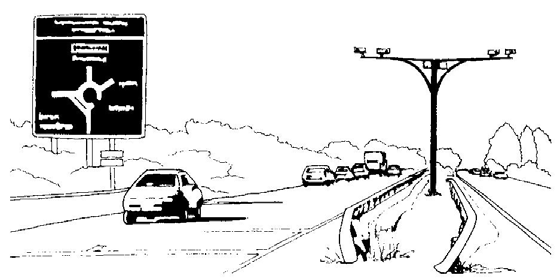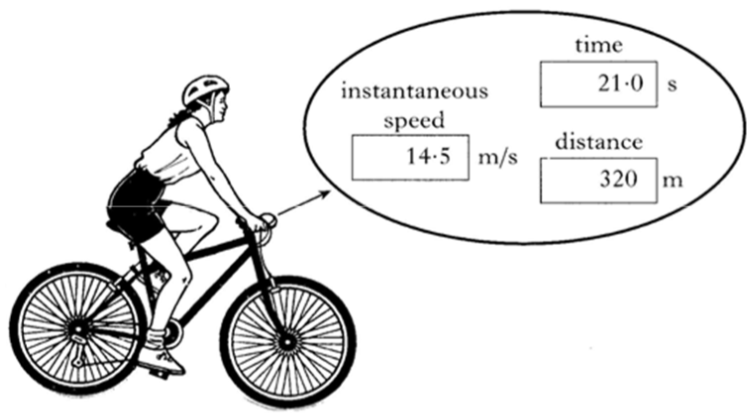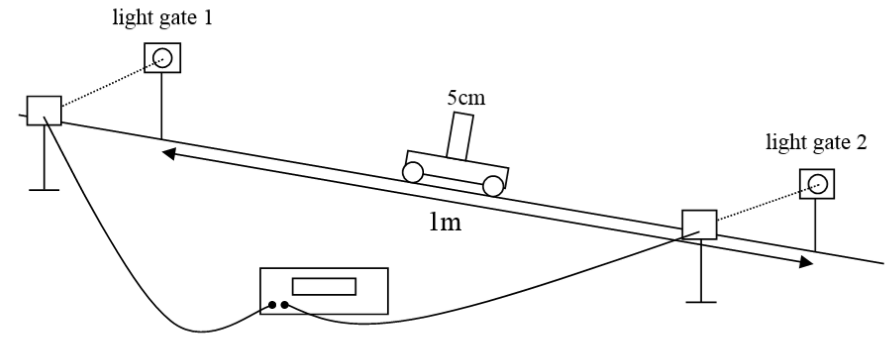1. Calculate the average speed of a girl who runs 80m in 10s.
2. Calculate the average speed of a car if it travels 160km in 2hrs.
3. Calculate how far a man running at 8ms-1 will go in 5 minutes.
4. How long will it take a bird, flying at 30kmhr-1 to go 210km?
5. A trolley with a 5cm mask is allowed to roll down a slope between two light gates, 1m apart, as shown:
The following results were obtained:
Time for mask to pass through light gate 1 = 0.40s.
Time for mask to pass through light gate 2 = 0.08s.
Time for trolley to travel from light gate 1 to light gate 2 = 2.5s.
Find:
(a) the average speed of the trolley down the slope.
(b) the instantaneous speed of the trolley at the bottom of the slope.
6. A motorbike ‘wheelie’ means riding on the back wheel only. The record for a ‘wheelie’ is 331 000 m non-stop.
(a) Calculate the average speed of the motorbike if the distance was covered in 6 000 seconds.
(b) Describe how the average speed of the motorbike could be measured.
The fastest speed ever recorded for a motorbike was over 512 km/h. This record was set by Donald A. Vesco in 1978 on a bike with two engines.
(c) Suggest how this instantaneous speed could have been measured.
7. Cameras placed at 5km intervals along a stretch of road are used to record the average speed of a car.
 The car is travelling on a road which has a speed limit of 100km/h. The car travels a distance of 5km in 2.5 minutes.
The car is travelling on a road which has a speed limit of 100km/h. The car travels a distance of 5km in 2.5 minutes.
a) Does the average speed of the car stay within the speed limit?
You must justify your answer with a calculation.
b) At one point in the journey, the car speedometer records 90km/h.
Explain why the average speed for the entire journey is not always the same as the speed recorded on the car speedometer.
8. A cyclist has a small computer attached to her bike. The computer gives information on the cyclist’s speed, distance travelled and time taken.

At a point in the journey, the readings on the display are as shown above.
Calculate the average speed of the cyclist up to this point.
(You must use an appropriate number of significant figures in your answer to this question).

